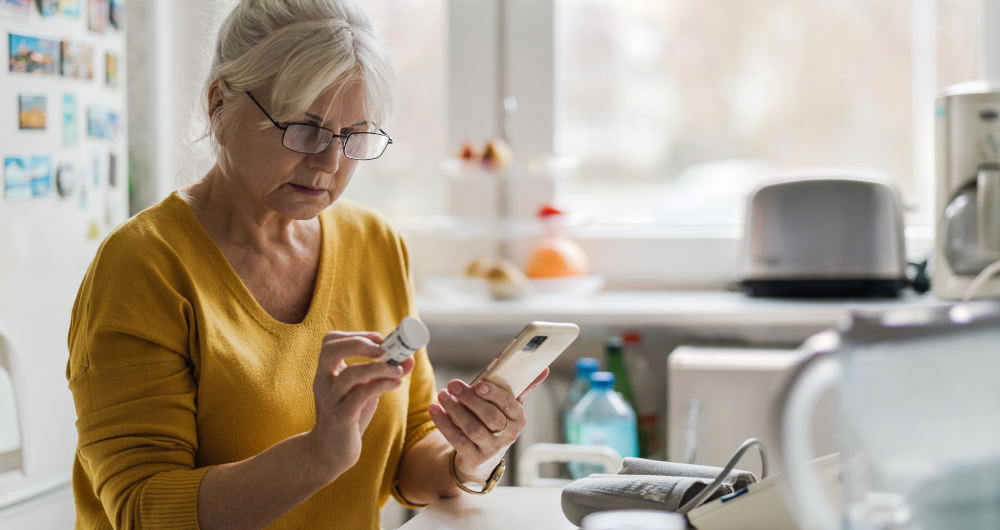The Consumerization of Healthcare Experiences
The healthcare industry has, sometimes paradoxically, long taken a business-to-business approach to its operations. Drug companies marketed to physicians, insurance companies marketed to clinics, with the patient too often a passive character in the story. However, like many other industries, healthcare needs to adapt to the new paradigm of patients becoming more engaged, informed, and demanding consumers.
Today’s patients are looking for much more than a prescription and a follow-up appointment. According to JPMorgan Chase, patients have a suite of considerations when choosing a healthcare provider, including “convenience, comfort, availability, flexibility and brand loyalty.”
While younger consumers are more likely to shop around and expect tech-enabled customer experiences, those behaviors are not exclusive to those under 40. Older consumers are taking advantage of the tools available to them to shop around and make more informed choices, and no one is immune to the high standards of customer experience set by on-demand service providers.
What Is the Consumerization of Healthcare Experiences?
The consumerization of healthcare is a changing understanding of a patient as an active consumer of healthcare products and services, as opposed to a passive recipient. For providers, it also means competition on a new slate of factors for patient business, all centered around providing the best experience for a consumer with very specific needs.
Healthcare is becoming a more individual, personal experience. Areas such as home health, where a professional comes into the home to provide care, are quite literally on the customer’s turf. If the patient doesn’t get a great experience–one where the caregiver respects their time, has the right information, and delivers the best possible service, the patient will look for it elsewhere.
Patients today are looking for the best all-around value. Their time, money, and ultimately their care are important factors that weigh in the decision on where to get care. In turn, it drives the healthcare industry toward greater consumerization and even “retailization.”
The Changing Healthcare Landscape
Changes are occurring at a rapid pace to shift toward healthcare consumerization.
Home healthcare is making a comeback, delivering care literally to the doorstep of patients. The Bureau of Labor Statistics predicts the addition of 1.3 million jobs to the field of home health care by 2020 in the United States, which makes home health care one of the fastest-growing industries.
New technologies are contributing to the consumerization of healthcare. Patients can now teleconference or video chat with a doctor instead of spending hours or days waiting for an in-person appointment. Some clinics and healthcare plans even have free hotlines that members can call to get medical advice. The Internet of Things makes it easier for caregivers to monitor patients’ progress and for consumers to track their own health indicators.
Another important shift is the rise of retail clinics: quick-care facilities offering limited services, often in chain pharmacies. Retail clinics make it simple for a busy person to get a flu shot or a prescription for an antibiotic without needing to take time off work to visit a primary care physician. The speed and convenience that make retail clinics appealing are a prime example of healthcare consumerization.
Health savings accounts (HSAs) are another example of a healthcare service that takes its cues from consumer businesses. According to the National Center for Health Statistics, 44% of Americans with private coverage were enrolled in a high-deductible health plan in 2017, up from 39% in 2016. High-deductible plans generally have lower premiums, making the out-of-pocket costs to receive care dramatically high. HSAs addresses this challenge facing healthcare consumers by offering tax-deferred savings accounts that can be used for certain healthcare expenses.
Changes are happening, and consumers are leading the charge.
Adapting to Healthcare Consumerization
Today’s consumers have high expectations for service delivery, and they are well aware they have options. While healthcare providers are often laser-focused on reducing costs, improving efficiencies, and maintaining compliance, patients are not always basing their decisions on these factors. When asked about what makes a doctor high-quality, patients rank attentiveness, competence, bedside manner, and several other factors over price.
That does not mean, of course, that healthcare providers should take the focus off reducing costs. But to stay competitive and retain patients, providers need to consider reinvesting any cost savings into these patient preferences that do strongly influence their purchasing decisions:
- Fast, easy access. When someone feels unwell, the last thing wanted is to get on the phone, go through phone prompts, sit on hold, and then get to speak with someone to book an appointment. Patient-driven scheduling allows consumers to book an appointment with the provider of their choice at a convenient time. This type of automated healthcare scheduling improves efficiency, resulting in more on-time appointments and more appointments per day.
- Attentiveness and bedside manner. Patients care greatly about how their caregivers interact with them. Healthcare is deeply personal and sometimes quite frightening for patients. When caregivers are equipped with personalized information and act on it in the right moment–like providing extra reassurance and kindness to a patient who is regularly nervous about a treatment, for example–that patient will not only appreciate it but will likely recommend that caregiver to others.
- Streamlined and interoperable patient data. Patients rightly expect that their health information collected in the past informs the best possible care. Not only will it frustrate patients to have to repeat information at each stage of their journey, but it also risks losing vital patient information, such as a medication allergy. Streamlined information sharing also means spending more time providing an excellent healthcare consumer experience. Maintaining interoperable healthcare IT systems is never something a patient would ask about, but it’s a prerequisite for meeting their consumerized demands. If systems don’t talk to each other, patient data won’t be where it needs to be when a caregiver has to act on it.
- Improved customer satisfaction. Happy patients are customers for life. Healthcare providers who aim to build relationships with patients and take steps to immediately address questions and concerns will enjoy repeat business; those who take customer satisfaction for granted will not.
The End Goal: An Excellent Patient Experience
In the changing healthcare climate, it’s a sink-or-swim market for healthcare organizations. Yesterday’s patient is today’s consumer. Don’t be afraid to market directly to the consumer and put the consumer’s needs first, just as any other business-to-consumer industry would.
The consumerization of healthcare requires providers to adapt to change. The end goal must be to provide excellent consumer experiences—every time, for every consumer.
Interested in learning more about how intelligent healthcare scheduling can help you provide excellent patient experiences? Request a Skedulo demo today!


